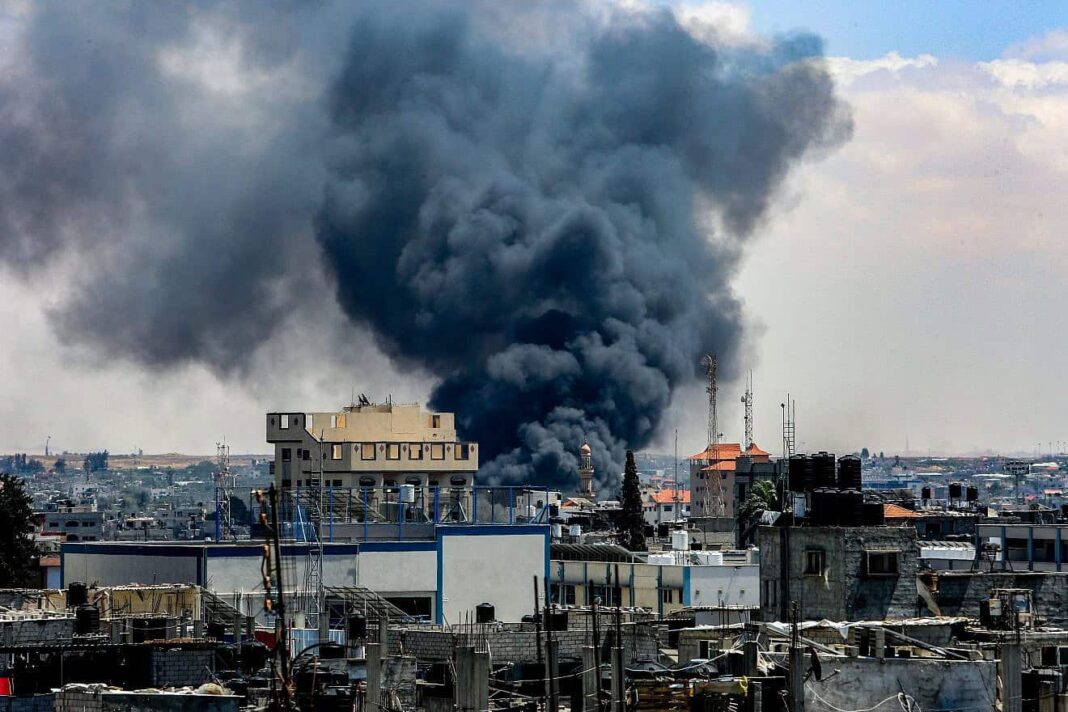|
Getting your Trinity Audio player ready...
|
In a message posted on X Monday morning, Israel Defense Forces Arabic spokesperson Col. Avichay Adraee issued a warning to residents of Rafah, specifically naming neighborhoods such as Al-Nasr, Al-Shawka, Salam, Al-Manara and Qizan Al-Najjar, along with the surrounding eastern and western areas.
#عاجل ‼️ إلى جميع سكان قطاع غزة المتواجدين في مناطق رفح، بلديات النصر والشوكة والمناطق الاقليمية الشرقية والغربية وأحياء السلام، المنارة وقيزان النجار
⭕️يعود جيش الدفاع الإسرائيلي للقتال بقوة شديدة للقضاء على قدرات المنظمات الإرهابية في هذه المناطق.
⭕️من أجل سلامتكم عليكم… pic.twitter.com/Ps1JvDoJRY
— افيخاي ادرعي (@AvichayAdraee) March 31, 2025
The Israeli military is “resuming strong military operations to dismantle the capabilities of terrorist groups” in these areas, he announced. Adraee urged civilians to evacuate immediately “for your safety,” directing them to seek shelter in designated zones within Al-Mawasi.
As part of the army’s ground operations in northern and central Gaza, soldiers recently dismantled a 1-kilometer (0.6-mile) long Hamas terror tunnel, the IDF said in a statement published on Monday afternoon.
IDF soldiers also discovered a workshop used for producing rockets and launchers, while eliminating over 50 terror operatives in targeted raids.
“IDF forces will continue to operate against terrorist organizations in the Gaza Strip in order to protect the citizens of the State of Israel,” it stated.
Meanwhile, a recent report from the Saudi-owned, London-based pan-Arab newspaper Asharq Al-Awsat has highlighted mounting dissatisfaction among Gazans toward Hamas.
Many residents have expressed frustration over the group’s continued rocket fire, which they recognize invites harsh Israeli retaliation and contributes to repeated displacement. Some voices within the community are calling for Hamas to step aside, hoping it might create an opportunity to reach a lasting ceasefire.
Anti-Hamas sentiment has surfaced more openly in recent demonstrations, including a protest in Gaza City’s Shejaiya neighborhood on March 27. Notably, according to the Asharq Al-Awsat report, these protests have not been met with the usual forceful response from the group—an uncommon development that some analysts interpret as a sign of internal weakening, possibly caused by the ongoing Israeli offensive.
Palestinians protesting Hamas
Hundreds of Gazan citizens carried white flags and called to end Hamas’ rule and to hand over the Israeli hostages.
Credit: @JNS_org @JoshMarks78
Read more here: https://t.co/XUyNgIi6sC pic.twitter.com/qwKXnjBQn6— Embassy of Israel to the USA (@IsraelinUSA) March 26, 2025
Despite this, fear persists among activists, particularly in light of the reported killing of Odai Al-Rubaie, an organizer allegedly abducted and executed by a group linked to Hamas after leading anti-government demonstrations.
The report also notes growing disarray within Gaza’s governing structures. With several high-ranking Hamas officials dead or unaccounted for, essential public services have stalled, salaries have gone unpaid, and confusion is spreading across sectors such as education.
Despite these apparent cracks in its authority, Hamas officials maintain that the organization remains cohesive and capable. They claim that a Community Support Committee has been established to oversee basic services during this period of uncertainty and insist they will reassert control once hostilities subside.
Israel has made clear that it will not support any post-conflict governance in Gaza that includes Hamas. Officials have tied any permanent ceasefire to the full disarmament and removal of the terrorist group from power—conditions that Hamas leaders have rejected outright.




